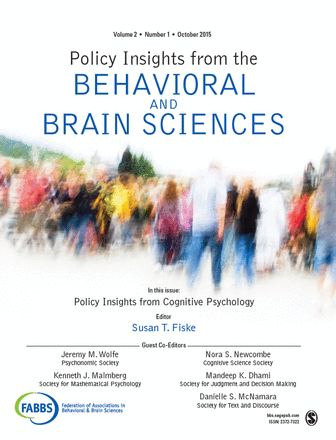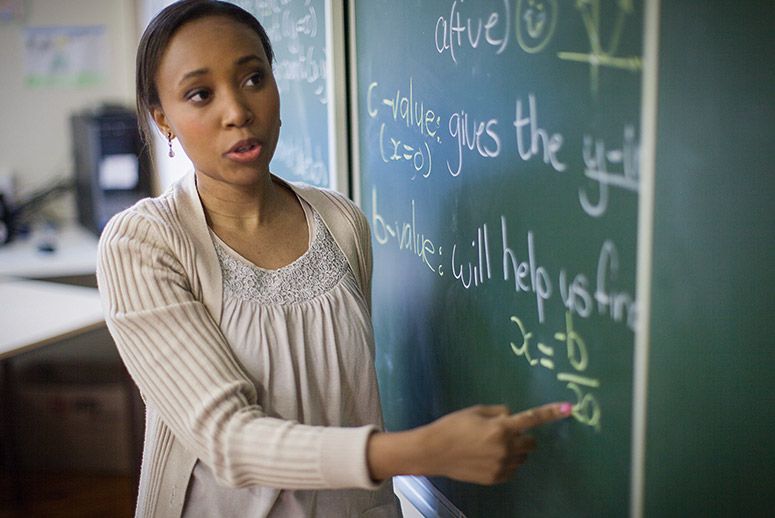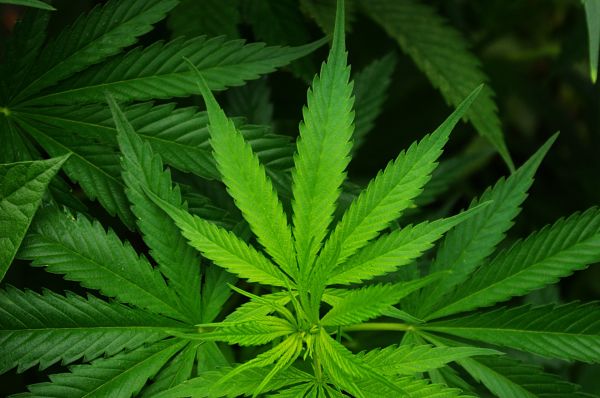 PIBBS
PIBBS Redefining What It Means To Be An Adult
Adulthood isn’t what it used to be. Fifty years ago, it was easy to tell when a teenager became an adult: he had graduated from high school, secured a long-term job, married, and had children. And it was reasonable to assume that he was an adult around age 20, as most people completed high school at 18 and attained the other milestones soon afterward.

The Federation of Associations in Behavioral and Brain Sciences, or FABBS, with SAGE, the parent of Social Science Space, publishes the journal Policy Insights from the Behavioral and Brain Sciences. This journal features research findings in the sciences of mind, brain, and behavior that are applicable to nearly every area of public policy. The second issue features 22 articles focused on cognitive psychology focused on topics including education, health, evaluating and mitigating risk, law, and improving society.
But the landscape of early adulthood looks vastly different today. The markers of adulthood are far less defined, and events like marriage and career choices happen in varying orders and timelines. Becoming an adult now is a gradual transition, a process psychologists have dubbed ‘emerging adulthood.’ The concept itself is emerging, and as with adolescence when it first entered the lexicon and the culture, emerging adulthood has developed out of a set of changing societal and economic forces. Barbara Schneider, Christopher Klager, I-Chien Chen, and Jason Burns cogently outline those forces in a recent article for Policy Insights from the Brain and Behavioral Sciences. But the implications of these major shifts in adulthood are far from clear, for young adults and for the rest of society.
One of the primary reasons that the attainment of adulthood is less defined today is that young people, especially women, have far more choices than they used to. With so many more career and life choices, women graduating from high school can attend college and graduate school, take time off to participate in a community service corps or travel, or begin a career that was once unavailable to them. It may not be surprising, then, that the average age of marriage for women is rising – it is 27 today, about seven years later than 70 years ago – as is the age of first childbirth (now 25.7). And magazines occasionally feature women in their 20s and 30s who are “single by choice” or intentionally “child-free.” Men, too have more choices when it comes to type of work and family arrangements. The number of stay-at-home dads remains small but has risen dramatically since the 1980s.
A more negative factor is the instability of the economy, especially since the economic crisis of 2008. A rise in unemployment and underemployment has hit young workers particularly hard. Today, many college graduates “find themselves employed as waiters and baristas rather than anthropologists or engineers,” Schneider and colleagues lament. At the same time, the cost of education and living have risen. Many young people struggle to find work during college to support themselves and their families and to pay for their tuition. And they and many others are saddled with college debt that impairs their financial stability into mid-life. Schneider and colleagues share the distressing statistic that “the average cumulative student loan debt per borrower (at graduation) has increased by 22.6% from 2000 to 2014.” It’s a catch-22: college graduates have significantly higher long-term earnings potential, but many struggle financially during and after college.
What does the shifting nature and changing timeline of adulthood mean for our society? The authors don’t take a position on whether the changes are good, bad, or neutral. But it’s logical to conclude that there are pros and cons to these shifts. The increase in freedom and flexibility for young people is a clear (and in the case of women hard-fought) win. But there is a paradox, because “many young adults have difficulty viewing themselves as independent adults with a sustainable occupation,” the authors write, pointing out that almost a third of Americans aged 18-34 live with their parents. That sounds like the opposite of freedom. And the lack of clear markers that lead young people to say, “I am now an adult” may have psychological and social downsides.
The authors argue for more institutional supports and programs to help young people chart a course to their futures. But the most effective answer may be to supplement existing efforts targeting adolescents, college students, and new workers, to “recognize that the challenges after high school are real,” as the authors put it. “Perhaps more than at any other time,” they write, families, schools, and social and civic institutions “need to play a more active part in helping young people plan and execute a successful course for the next decades of life.” That kind of support may be vital not just to young people themselves, but to the past and future generations who will rely on them.


























































































